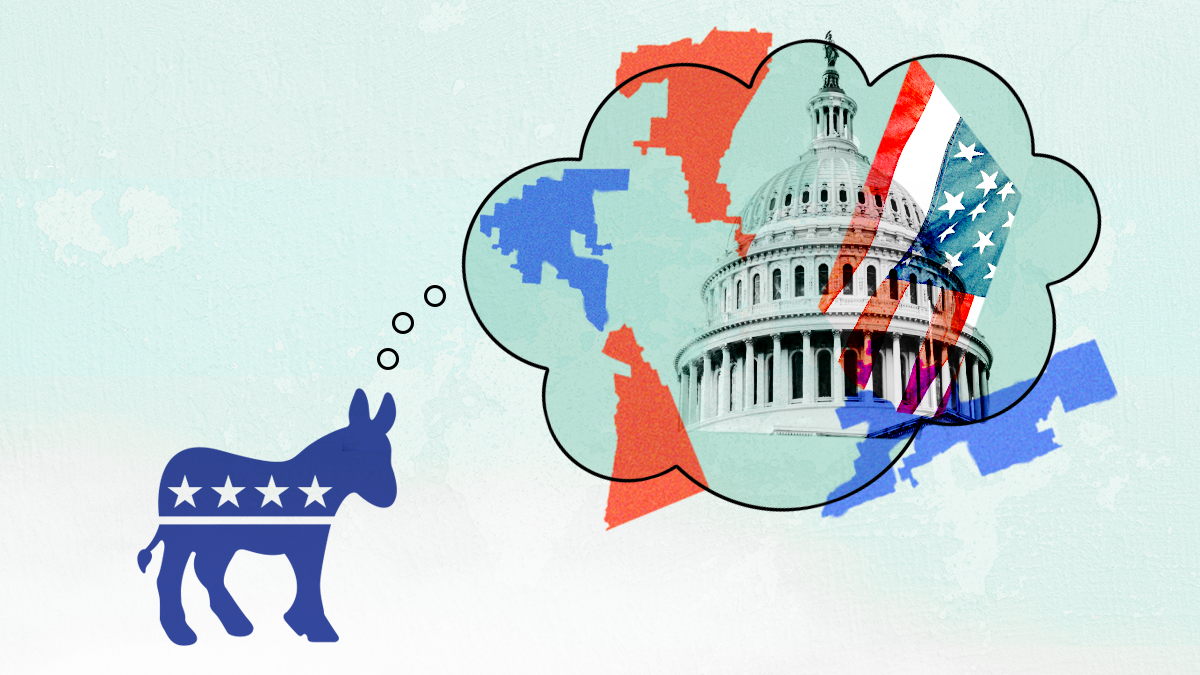US midterm elections tend to be bad for the party in the White House.
Held at the halfway point of a presidential term, they have become a favored occasion for Americans to lodge a vote of protest over the problems of the day. Record-high inflation and surveys showing that 70% of voters think the country is on the “wrong track” had created the expectation of a particularly severe backlash against President Joe Biden’s Democratic Party this November.
Republicans need to pick up only four seats to gain control of the 435-member House of Representatives. More Democrats are running in districts won by former President Donald Trump in 2020 than Republicans in districts won by Biden, and redistricting has created more Republican-friendly districts than two years ago.
In the Senate, Democrats are defending seats in four of the states Biden won by the narrowest margins in 2020, creating pick-up opportunities that would allow Republicans to take a clear majority in what is today an evenly divided Senate (with Vice President Kamala Harris wielding a tie-breaking vote).
But despite these strong structural factors, signs of strength for Democrats have emerged in recent months.
Biden’s long net approval rating slide that began on Inauguration Day 2021 and accelerated with the chaotic withdrawal from Afghanistan last summer recently began to reverse as gas prices started to come down from their April highs. A productive legislative session in July helped the president to deliver in policy areas including climate change and semiconductor subsidies, challenging the belief that Biden is unable to lead in a divided Washington.
The recent FBI raid to recover classified documents from Trump’s Florida residence has brought the unpopular and divisive president back into the headlines. Democrats are eager to woo independent voters by making the midterm elections about the former president and not about inflation, immigration, or crime, all areas where Republicans have been trying to press an advantage in recent months.
Though concerns about jobs and the economy are still top of mind for voters, abortion is emerging as a major issue in the 2022 midterm elections after the conservative-dominated Supreme Court overturned the generally popular 1973 Roe v. Wade decision legalizing abortion nationwide. This has created space for states to pass their own laws either banning or expanding abortion access.
As a result, abortion access is on the ballot in states such as Pennsylvania, which has both a competitive Senate race and an open governor’s race. Republicans in several states have been pushing full bans on abortion, which are supported by only about 20% of the electorate. Most Americans favor legalizing abortion access in the first trimester of pregnancy but not after.
Polling suggests that the Dobbs ruling is helping Democrats – who had been suffering from a lack of enthusiasm all year – drive new voter registrations and primary turnout. A referendum on abortion in deep-red Kansas showed a surprising shift from the 2020 election in favor of the Democratic position, delivering Republican candidates a warning that they should moderate their abortion stances.
Although Republicans remain the favorites in the House given the thin margins, in the Senate, several first-time political candidates are underperforming relative to expectations against incumbent Democrats, hurting Republican chances of gaining a majority in the upper chamber.
Still, should Republicans take the majority in the House, Biden’s legislative agenda would come to a full stop. Republicans would use congressional committees to investigate the Biden administration and potentially push articles of impeachment against one or more cabinet members.
And if the GOP also takes the Senate, it will be much more difficult for Biden to confirm people to cabinet posts and impossible for him to appoint any judges. The annual appropriations process and the periodic process of increasing the US borrowing limit will be more difficult in either situation.
Polling remains a major question mark: In 2020, polls missed by double-digit margins in several competitive races. The errors had all suggested stronger performances by Democrats because of what pollsters believe is a problem of Republicans not answering their phone calls.
If Senate polls today are off by as much as they were in 2020 – an average of 4 percentage points – then Republicans are probably in much better shape than it appears in states like Georgia and Nevada.
As the campaign season heats up, keep an eye on key Senate states of Nevada, Georgia, New Hampshire, Arizona, Pennsylvania, Wisconsin, and Ohio. Looking at where the parties and their outside affiliates are spending money can also be a helpful indicator of which states are competitive: Republican donors last month pulled back funding in Arizona until the polling improves because they do not want to waste money on a lost-cause Senate candidate.
Finally, the strength of the economy will be a key indicator of who has the momentum. As the Federal Reserve hikes interest rates to control inflation, the job losses that’ll follow would strengthen headwinds for the party in power.
In the meantime, Democrats are daring to hope they may buck historical trends this November.
Jon Lieber is head of Eurasia Group's coverage of political and policy developments in Washington, DC.






